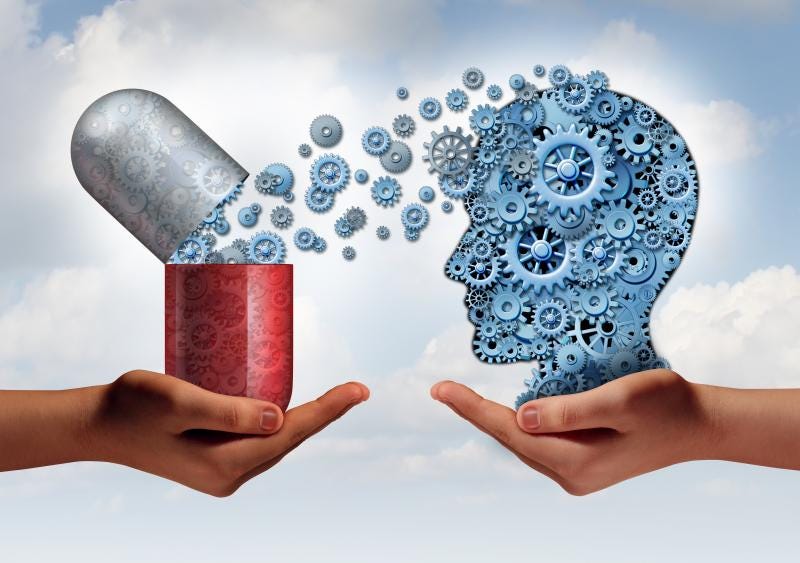What did the Scientist who Discovered Statins Do for His Own High Cholesterol?
This Simple Test Can Help You Decide if Statins are Potentially Beneficial for You
Do you know the story of the Japanese scientist who first discovered the chemistry of Statins (cholesterol-reducing drugs)? And what did he do when he found out about his own high cholesterol levels?
Akira Endo is the Japanese biochemist whose research into the relationship between mycotoxins (from certain fungi) and cholesterol biosynthesis led to the development of Statin drugs. Endo was born into a rural farming family in northern Japan. His grandfather, who had an interest in medicine and science, was a great home teacher to Akira, who became fascinated with mushrooms and other molds. At the age of 10, Akira dreamed of becoming a scientist and later was inspired by the biography of Alexander Fleming, who discovered penicillin in the blue-green mold belonging to the genus Penicillium. Endo later pursued that interest by studying in the US and developing drugs like Compactin which led to Statins like lovastatin.
Years later, when Endo was diagnosed with high cholesterol levels, he was prescribed Statins. His reaction to that prescription will stun you (watch the following video to find out).
What are Statins?
Statins, a class of drugs that reportedly reduce risk of cardiovascular disease and LDL-Cholesterol, are among the most prescribed and profitable medicines in history. In 2013, Lipitor (one of the many brands of Statin, manufactured by Pfizer) became the best-selling pharmaceutical in history. Worldwide Lipitor sales peaked at almost $13 billion (since then the global sales of COVID vaccines by Pfizer have far outpaced other medicines).
Early Statin-type drugs like Citrinin and Compactin, which lowered serum cholesterol levels were suspended because of their toxicity to the kidneys and causing lymphoma in animal studies. Like most other pharmaceuticals, the use of Statins is associated with serious side effects (injuries) such as diabetes, liver damage, dementia , Alzheimer’s (see image above) and ALS. So how does one know, based on his/her blood levels of Cholesterol, if Statins are right for them? There are certain blood biomarkers (such as the levels of HDL cholesterol and Triglycerides and their ratio) that can help you decide if Statins are right for you, according to Dr. Paul Mason, an Australian Doctor of Sports Medicine who shares the findings of his research paper in this short educational video:
It appears that people with Triglyceride to HDL-cholesterol ratios of higher than 2 can benefit from Statins (if they can accept the risks associated with the drug, and are reluctant to modify diet and lifestyle factors that are shown to play a great role in primary prevention of cardiovascular events).
Although I personally follow a balanced Carb-fat-protein-fiber diet (instead of a low-carb, high-fat or low-carb, high-protein diet), I find Dr. Mason’s findings interesting and educational. In my book, I discuss some other biomarkers that help us decide on a proper balance in our diet and lifestyle (metabolism).
I did not have the support of Big House publishers so as an independent scientist/author, I feel proud when I receive great reviews by independent readers like you. The following is an introduction to the book on Amazon, ranked as Hot New Release:
Why do humans walk a tightrope between depression and addiction (habituation), anxiety and recklessness? Why is it so hard to kick bad habits? Who do several countries now have Ministries of Loneliness to keep the social fabrics from falling apart? Why are humans so prone to self-delusion, self-deception, and forming mobs and cults?
Most of us know more about sports, politics, games, apps, and our jobs than about how our own brain and body work or get burned out together. For less than the cost of a family dinner, this is one of the few books in the market that can help us understand in simple language the complex nature of body-brain feedback loops as the common denominator of disorders and diseases (such as diabetes, depression, hypertension, weight gain, dementia, sleep disorders, constipation, infertility), and discords (fights, divorces, lawsuits, riots, wars). The author has spent two years to ingeniously draw from the latest discoveries in a wide range of disciplines: Neuroscience, evolution, biochemistry, psychology, economics, physics, philosophy, nutrition, and even mysticism to help us understand the cerebral root of fatigue and imbalance that plague human lives, rich and poor alike. This book is an essential simplified scientific “user manual” for our brain and body.
The world’s largest battles are fought inside human minds and today most of us suffer from abuse not by others but by our own brain. In this book, we learn about the neurochemical soup that makes our "economic" brain prone to "metabolic" imbalance and leads us to pursue unfettered growth. "The sky is the limit" thinking has constructed a world of winners, losers and barely anyone in between.
In my book and my blogs (here and on Homo economicus), I connect our biology to our psychology and brain’s neurochemistry to show why our denatured evolutionary path has led to widespread imbalances both at the individual and social levels, which we respectively call disease and injustice.



